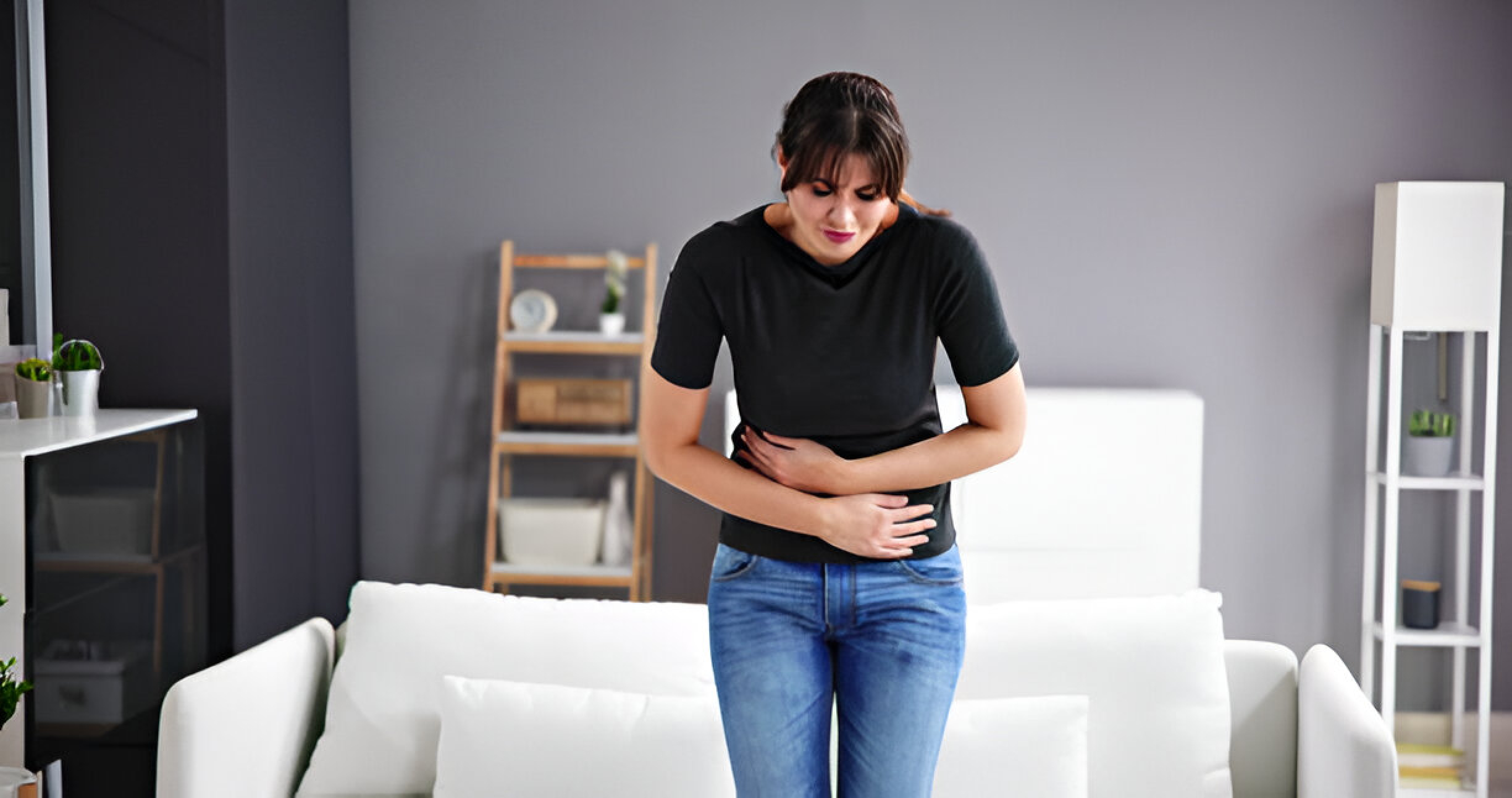Lower Abdominal Pain
Introduction
This article discusses the symptoms, causes, and medical management of various types of lower abdominal pain.

1: What is Lower Abdominal Pain?
Lower abdominal pain refers to discomfort or pain felt in the lower part of the abdomen, where numerous organs, including the appendix, uterus, intestines, and bladder, are located. Identifying the source of the pain helps medical professionals determine which organ or system might be affected. It’s important to note that lower abdominal pain can stem from both minor and serious causes.
2: Common Causes of Lower Abdominal Pain
Uterine Fibroids and Adenomyosis: Uterine fibroids are benign growths that can cause pain, especially during menstruation. Adenomyosis occurs when the uterine lining grows into the uterine muscle, leading to discomfort and heavy periods.
Gastrointestinal Issues: Gas, indigestion, and constipation can cause lower abdominal pain due to bloating, cramps, or trapped air in the intestines.
Ovarian Cysts: These fluid-filled sacs can rupture or twist, causing pain in the lower abdomen, especially if they affect nearby organs.
Appendicitis: Inflammation of the appendix causes severe pain, typically starting in the lower right abdomen and moving towards the navel.
Pelvic Inflammatory Disease (PID): Often caused by sexually transmitted infections, PID can lead to lower abdominal pain.
Kidney Stones: These can cause severe pain in the urinary tract, which may radiate to the lower abdomen.
Endometriosis: This condition occurs when the uterine lining grows outside the uterus, leading to painful menstruation.
Irritable Bowel Syndrome (IBS): IBS can cause lower abdominal pain, discomfort, and changes in bowel habits.
Hernias: A hernia occurs when an internal organ or tissue pushes through a weak spot in the abdominal muscles, causing discomfort.
Varicocele: This is the enlargement of veins in the scrotum, which can cause pain in the scrotum, testicles, and lower abdomen.
3: When to Seek Medical Attention
Lower abdominal pain can range from mild and temporary to severe and life-threatening. Be alert for the following signs:
- Severe and Sudden Pain: This could indicate appendicitis, kidney stones, or a ruptured cyst.
- Fever and Chills: These symptoms may accompany infections such as appendicitis, UTIs, or PID.
- Bloody Urine or Stool: Blood in urine or stool could signal serious conditions like kidney stones or gastrointestinal bleeding.
- Persistent Pain: If pain persists or worsens over time, consult a doctor to investigate potential chronic conditions.
4: Diagnosis and Medical Evaluation
Accurate diagnosis is essential for identifying the cause of lower abdominal pain. An evaluation typically includes:
- Medical History Review: Your doctor will ask about your current health, medical history, and lifestyle factors.
- Physical Examination: A thorough exam can reveal sensitive areas, swelling, or abnormal masses.
- Imaging Tests: Ultrasound, CT, and MRI scans may be used to visualize the affected area and identify abnormalities.
- Laboratory Tests: Blood and urine tests can detect infections, inflammation, and other underlying health issues.
5: Treatment Options for Lower Abdominal Pain
The treatment approach depends on the cause of the pain:
- Self-Care Measures: Rest, warm compresses, and over-the-counter pain relievers may help in mild cases.
- Dietary Changes: Increasing fiber intake can alleviate gastrointestinal-related lower abdominal pain.
- Antibiotics: If a urinary tract infection is suspected, antibiotics may be prescribed after a urine culture test.
- Hormonal Therapies: Hormone treatments can relieve pain and inflammation caused by gynecological conditions like endometriosis.
- Surgical Interventions: Conditions like appendicitis or ovarian fibroids may require surgery.
- Minimally Invasive Treatments: Uterine fibroid embolization, varicocele embolization, and microwave ablation are less invasive alternatives to surgery for certain conditions.
Regular follow-up with your doctor is crucial to adjust treatment plans as needed. Accurate diagnosis and timely treatment are key to managing lower abdominal pain effectively.
Conclusion:
Lower abdominal pain is a significant symptom within the complex landscape of health. We’ve explored various causes to highlight the diverse issues that can arise in this region. The wide range of potential causes, from gastrointestinal problems to gynecological conditions, underscores the importance of thorough medical evaluation.
Understanding the causes and treatments of lower abdominal pain is the first step towards relief. Knowing when to seek help, how to obtain a diagnosis, and exploring treatment options can help you manage this aspect of your health confidently.
Prioritize your health and collaborate with medical professionals to identify the root cause of your symptoms. Whether through self-care, dietary adjustments, medications, or minimally invasive treatments, the goal is to restore comfort and improve your quality of life.

